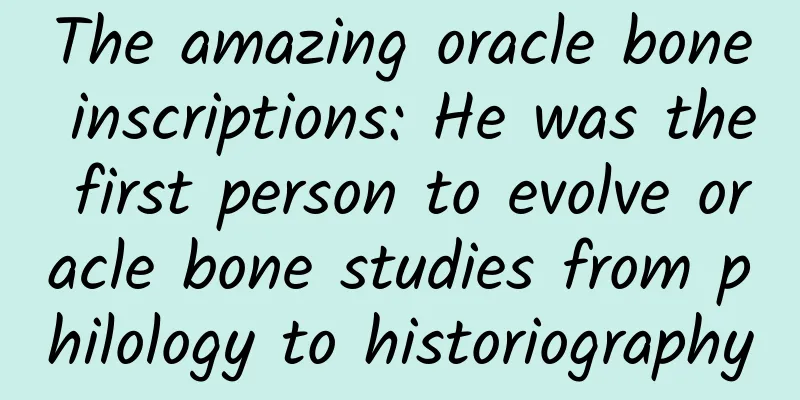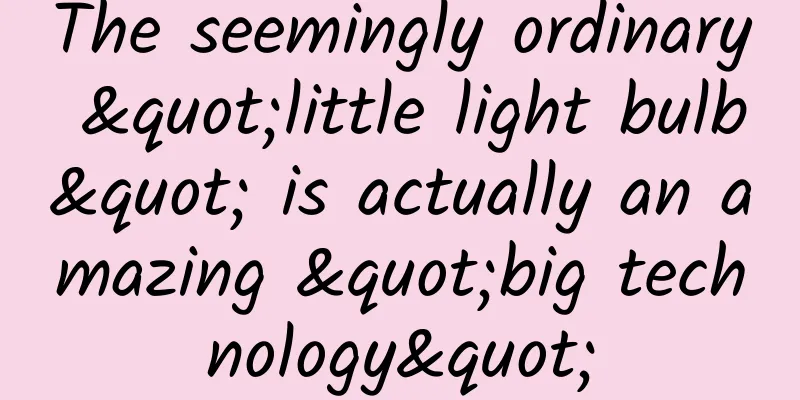The amazing oracle bone inscriptions: He was the first person to evolve oracle bone studies from philology to historiography

|
Wang Guowei Wang Guowei's work "New Evidence of Ancient History" Early in the morning of July 12, a long queue formed in front of the new building of Anyang Yinxu Museum. Tourists from all over the country came to "Dayi Shang" to experience the great Shang civilization. The history of the excavation of Yinxu is half of the history of Chinese archaeology. The prologue hall on the first floor, "Exploring Shang Civilization", takes time as the axis and important discoveries as clues to comprehensively and systematically sort out the important achievements of Yinxu archaeological research since 1928, tracing back the entire exploration process of Shang civilization. The historical picture of the Shang Dynasty, which lasted for nearly 600 years, gradually becomes clear and spreads out before the eyes of tourists. "I first learned about Wang Guowei from Human Words, but I didn't expect that he was also one of the 'Four Masters of Oracle Bones'." In front of the display board, Wang Yi, a tourist from Shanghai, sighed after carefully reading the introduction about Wang Guowei. He said that his visit to the Yinxu Museum refreshed his understanding of oracle bone researchers. He and Luo Zhenyu are close friends Wang Guowei was a master of Chinese studies. In 1925, he was hired as a professor at the Institute of Chinese Studies of Tsinghua University. He was known as one of the "Four Great Mentors" of Chinese Studies at Tsinghua University, along with Liang Qichao, Chen Yinke, and Zhao Yuanren. He made outstanding contributions in literature, history, and philosophy, especially in the study of oracle bone inscriptions, for which he is known as a founding figure. Wang Guowei and Luo Zhenyu were close friends who supported each other and each achieved knowledge that was passed down to later generations. In 1898, the 21-year-old Wang Guowei worked as a copyist and proofreader for the Shiwu Bao, which was sponsored by Wang Kangnian and Liang Qichao. Soon after, the Shiwu Bao was closed down due to its fierce words. Luo Zhenyu, who sponsored the Dongwen Society, appreciated Wang Guowei's talent and asked Wang Guowei to study Japanese and do odd jobs at the Dongwen Society. In the subsequent exchanges, Luo and Wang admired each other's talents and became close friends. In November 1911, Wang Guowei and Luo Zhenyu traveled to Japan. Luo Zhenyu brought his collection of books and oracle bone artifacts to Japan. Wang Guowei's interest was originally in Western philosophy, but from then on he turned to Chinese studies. It was also during this period that Luo Zhenyu and Wang Guowei began academic discussions and exchanges of ideas. With the help of Luo Zhenyu, Wang Guowei began to study oracle bone inscriptions, and conducted more in-depth research based on the oracle bone inscriptions and rubbings collected by Luo Zhenyu, resulting in rich research results and writings. He used oracle bone inscriptions to examine the social history of the Shang Dynasty "Wang Guowei was the first person to evolve oracle bone studies from philology to historiography." Wang Shuangqing, an associate researcher at the Chinese Character Museum, introduced that Wang Guowei wrote "A Study of the Ancestors and Kings Seen in the Oracle Inscriptions of the Yin Dynasty", "A Further Study of the Ancestors and Kings Seen in the Oracle Inscriptions of the Yin Dynasty", "On the Systems of the Yin and Zhou Dynasties", "A Study of Place Names Seen in the Oracle Inscriptions of Yin Ruins", "Essays on the Rites of the Yin Dynasty" and "New Evidence of Ancient History". He compared the oracle bone inscriptions found underground with the ancient Chinese historical books found on paper, used the oracle inscriptions to correct the errors in the records in the books, and further explored the political systems of the Yin and Zhou dynasties, drawing new conclusions. He called the above textual research method "double evidence method", which means to use underground materials (archaeology) and paper materials (documents) to verify and compare to verify the truth of ancient history, which has become a recognized scientific academic mainstream. This textual research method not only inherited the textual research tradition of the Qianlong and Jiaqing schools, but also used the scientific textual research method of Western positivism, organically combining the two, opening up new areas in the study of ancient history, creating new methods, and achieving great achievements. Guo Moruo once praised: "What Wang Guowei left us is the product of his knowledge, which is like a towering pavilion, shining a different light on the fortress of traditional learning for thousands of years." Wang Shuangqing introduced that in the study of oracle bone inscriptions, Luo Zhenyu focused on the interpretation of oracle bone inscriptions, while Wang Guowei used these inscriptions to examine the social history of the Shang Dynasty. In the "Records of the Grand Historian: Annals of Yin" written by Sima Qian of the Western Han Dynasty, it is recorded that Cheng Tang, the first king of the Shang Dynasty, lived in a place called "Bo". Wang Guowei found eight place names including "Bo", such as "Yong", "Cao" and "Qi" from the more than 200 place names inscribed on oracle bones. Wang Guowei wrote "A Study of the Ancestors and Kings Seen in the Oracle Inscriptions of Yin", and soon wrote "A Continued Study of the Ancestors and Kings Seen in the Oracle Inscriptions of Yin", which verified the ancestors and kings of the Shang Dynasty such as Wang Hai, Wang Heng, and Shang Jia, proving that the records in the history books were generally correct, and corrected the errors in the order of Bao Yi, Bao Bing, Bao Ding, etc. in "Records of the Grand Historian: Annals of Yin". He opened up a new realm of ancient philology "Wang Guowei not only played an important role in the establishment of oracle bone studies, but also made all-round contributions to ancient philology," said Liu Hao, a researcher at the Chinese Character Museum. "Guo Moruo once spoke highly of Wang Guowei: 'His research on oracle bone inscriptions, bronze inscriptions from the Yin and Zhou dynasties, and bamboo slips and seals from the Han and Jin dynasties is epoch-making work.'" "Wang Guowei not only discovered the historical value of oracle bone inscriptions, but also made pioneering contributions to the study of oracle bone dating and oracle bone splicing, which gave great inspiration to later scholars. On the interpretation of oracle bone inscriptions, Chen Mengjia commented in "A Summary of Oracle Inscriptions from Yinxu": 'Although the number of characters he interpreted is not large, he still has his special contribution... Wang interpreted only a dozen or so characters, but he recognized the early character "王", which is very important for the overall understanding of the oracle inscriptions. His understanding of the characters "旬" and "翌" solved the problem of the oracle inscriptions that occupy a large number of Xun characters.'" Liu Hao introduced to reporters. "Wang Guowei's contribution to the textual research of cultural relics and the interpretation of inscriptions is also very outstanding. He pointed out that the reason why the text on ancient artifacts is difficult to interpret is that modern people 'do not know the ancient times as well as the modern times.' Due to this limitation, it is impossible for us to read all the ancient characters, so we must oppose the tendency to interpret every word and not understand anything without meaning. This is a very valuable understanding that transcends the times," said Liu Hao. Liu Hao introduced that Wang Guowei proposed six very important principles on how to examine and interpret texts and read inscriptions, namely "examine historical events, base on the Book of Songs and the Book of Documents, examine ancient sounds, refer to Yi artifacts, and draw inferences from this and that and answer questions that are still in doubt". "Nowadays, the level of science and technology is changing with each passing day. It is much more convenient for us to study and research ancient texts than a hundred years ago, but these principles proposed by Wang Guowei are still the only way to study ancient texts. Wang Guowei wrote many famous textual research articles and inscriptions on bronze and stone inscriptions. He was always able to write rigorous textual research, not limited by prejudice, and able to come up with innovative articles that his predecessors had never come up with. Liang Qichao said that Wang Guowei's Guan Tang Ji Lin 'almost every article has new inventions', which is not an intentional exaggeration." Liu Hao introduced. |
<<: "Mushroom" warriors, be careful of these delicious traps when eating wild mushrooms!
>>: If the whole of China is a class, Ningxia is a real health "expert"
Recommend
App promotion and application insight report!
According to our data monitoring of the mobile ap...
Basic steps to build a website: What are the 7 basic processes of website construction?
In the era of Internet marketing, both traditiona...
What is the future of Silicon Valley people after they turn 35? Are there great opportunities for entrepreneurship?
[[153556]] Similar to Silicon Valley, we also hav...
【Creative Cultivation Program】Where is Newton's apple?
Author: The Nutcracker Studio The great scientist...
What exactly is being optimized when optimizing information flow ads?
Is the following scenario the daily work of most ...
With the help of a series of "evidence", he "solved" the biological "mass murder" 252 million years ago
The mass extinction event during the Permian peri...
Electric Technology Car News: Changan CS95 vs. Trumpchi GS8: Which one is the most powerful domestically produced 7-seater SUV?
In China, 7-seat SUVs are not very popular among ...
What is the difference between WeChat, WhatsApp and LINE?
Wang Xing, the founder of Meituan, proposed a the...
How to send birthday wishes to Africans? How much does it cost to raise a sign to bless in Africa?
With the arrival of Chinese Valentine's Day o...
Have you ever seen a railway that runs through the air and in a cave?
Vocabulary Logistics transportation completion an...
In addition to the red umbrellas and white stems, have you ever seen these poisonous mushrooms?
Recently, it was reported that a grandmother, mot...
Temperatures in many parts of the south continue to "dive", and most areas in the north remain "chilly". Please note that large-scale rain and snow are coming!
Central Meteorological Observatory forecast: From...
iOS 13 beta 5 released with new features and changes
Apple today released the fifth developer beta of ...
International Energy Agency: Global Electric Vehicle Outlook 2019 (232 pages)
The International Energy Agency (IEA) publishes a...
US expert: China's auto industry is developing synchronously in all fields
At a recent symposium organized by the University...









